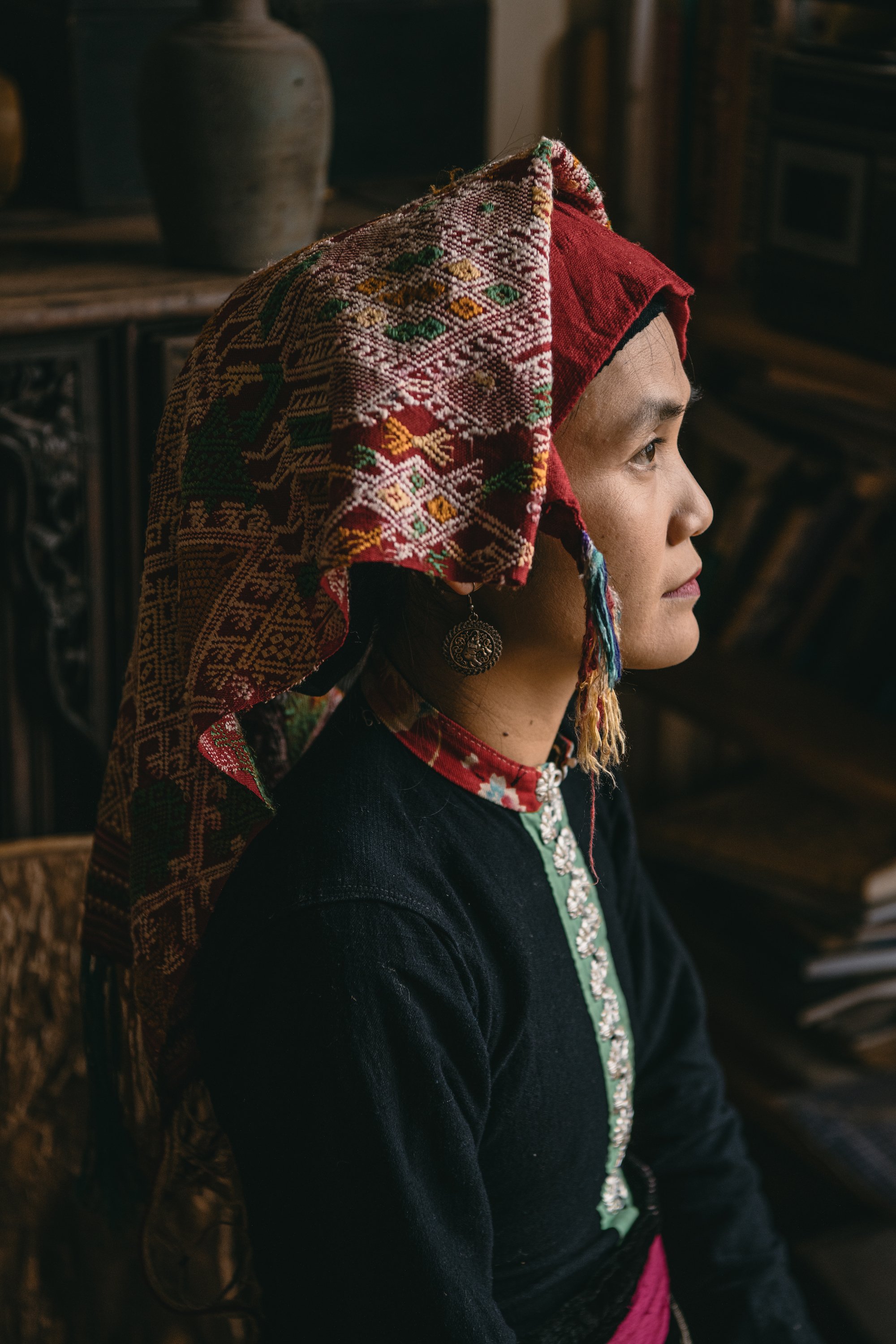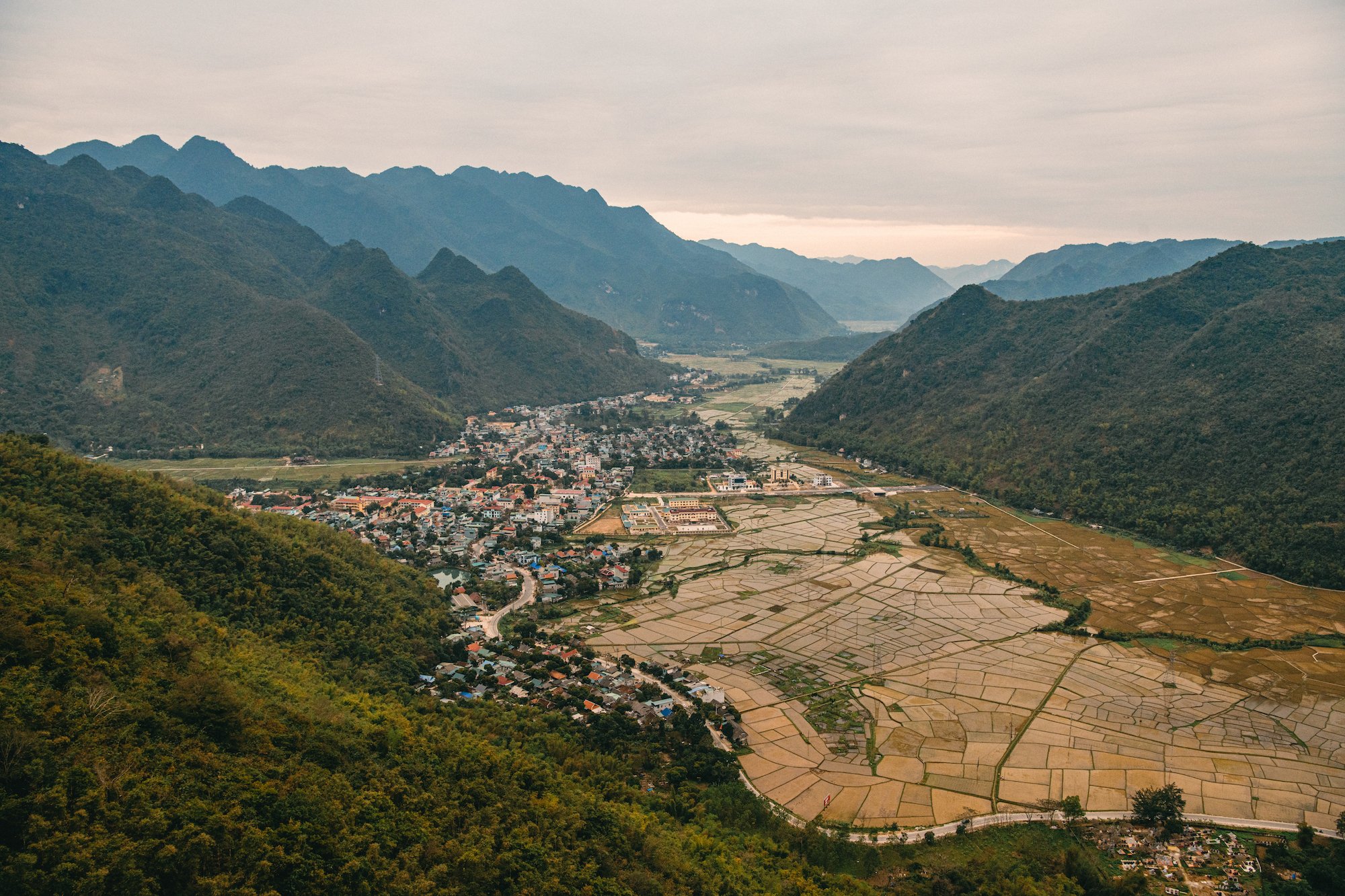Story by TextileSeekers
Amid the dense forests and towering mountains of Vietnam’s breathtakingly beautiful northwest region, we find a distinct ethnic culture whose contributions to Vietnamese craftsmanship and visual identity cannot be understated.
The Tay community, who settled this region having fled their native homes in Thailand generations ago, have flourished to become the second-largest - and one of the most instantly recognisable - ethnic minorities in the country, bringing with them their unique handicrafts, colours, and ancestral silk production and weaving methods. By far the most iconic garment produced and treasured by the Tay tribes is the Pieu scarf. Typically 1.6 metres long and 40cm wide, this precious symbol of the community plays a significant role in several aspects of the tribeswomen’s lives, and seamlessly integrates the practical with the spiritual, the beautiful with the mundane, and the past with the present.
A Symbol of Community
Made from cotton fabric that has been repeatedly dyed, most commonly with indigo - which forms a cultural bedrock of southeast Asia - to ensure a deep and evocative hue, and embroidered with silk thread, the Pieu scarf is worn on a daily basis as an ancestral signifier of community life. It keeps the women cool in humid summers, protects from cold winter breezes, ensures their hair remains untangled, and prevents dust and pollution from damaging the skin.
As one might expect, the Pieu scarves worn while working and in day-to-day life aren’t necessarily elaborately-decorated and embroidered. Indeed, such scarves tend to be plain and practical, with the more spectacular creations reserved for courtship rituals, spiritual milestones, festivals, musical performances, and the renowned Thai Xoe traditional dances.
Ancestral Craftsmanship, Timeless Skills
Handed down from mother to daughter in an unbroken chain, the time-honoured methods of Pieu scarf production are treasured by the Tay people. While certain embroidered symbols and patterns are almost ubiquitous in the scarves’ design, each woman adds her own unique elements, which reflect her personality, wishes, aspirations and dreams.
Certain traditional practices are commonplace in Pieu scarf design, including stylising the edges of the scarf with interwoven green, purple, red, and yellow thread. Often, the women will decorate the borders of their scarf with iconic buds made from rolled pieces of red cloth that resemble fern fronds (a shape which holds special significance to the Tay people). Elsewhere on the scarves, geometric shapes ranging from squares to diamonds, triangles, and zig-zags are standard, adding to the symbolic idiom of their design.
A Thousand Stories, Woven in Silk
As is so common in the handicrafts of this corner of the world, the symbols, patterns, and imagery found on Pieu scarves has its own stories to tell. The floral designs which are central to the scarves represent the high status of women in Tay communities, symbolising their empowerment and their central role in tribal life. They indicate not only their artistic vision and aspirations, but also their entire perspective on life and strength of perseverance - just as the flowers bloom year in, year out. Diamonds symbolise success and bring good luck, prosperity and longevity, and different animals and birds each have their own symbolic significance, too.
When it comes to love and relationships, the scarves also play a role. In an ancient tradition, men seeking to capture the heart of a tribeswoman will grab the cloth balls on the border of her scarf, and will exchange a silver bracelet or other item of jewellery for her scarf. Furthermore, men will carefully consider the quality and expertise of a woman’s weaving when seeking a wife, and the scarf itself becomes a symbol of the loyal bond between partners and their families.
Even at the very end of life, the Pieu scarf has a role to play. The scarves are believed to represent one’s path from this world to the next, and numerous scarves are typically added to the funeral pyre to ease the soul’s passage to the heavenly realm. What’s more, when a husband or wife passes away, the wife’s scarf is cut into two pieces. One piece will cover the face of the deceased, and the other will remain with the surviving partner for the rest of their life, playing its role in their own funeral, when the time finally comes. This ritual, and the love and artistry which goes into the scarf-making itself, is one which connects the two souls and allows them to meet in the afterlife.
TextileSeekers curates experiences focusing on indigenous textile practices and highlighting the value of provenance. Founder Thao Phuong views TextileSeekers as a creative expression; one which allows her to carve out space for other like-minded women who wish to explore the heritage of traditional craftspeople. For her, it is the gathering of a tribe, one which bonds over shared values and forges deep connections with the communities they visit, while helping to ensure the survival of ancestral knowledge for future generations.
In TextileSeeker’s bid to promote sustainability in today’s fashion ecosystem, they have curated a collection of trips to Vietnam later this year. You can learn more about the experiences by clicking here.









